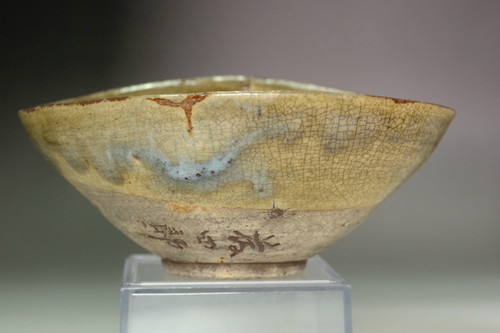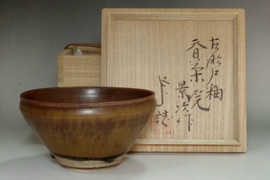16C-17C Antique TOSHIRO ware teabowl #5142
- SKU:
- 5142
- Shipping:
- Free Shipping
- width: approx. 15cm (5 29⁄32in) x 13cm (5 1⁄8in)
- tall: approx. 7cm (2 3⁄4in)
- weight: 263g (w/ box 522g)
- condition: firing fault
- writing: Kizeto ware teabowl (on the box), Toshiro (on teabowl)
Toshiro ware
The founder of the Kuzujiri kiln, located in Mino Province (now Gifu Prefecture), is Kato Yoshibe Kagemitsu. His eldest son, Kato Shiroemon-no-Suke Kagenobu (?-1632), is also known by the name Toshirō. He traveled to Hizen Province (Saga Prefecture) to seek guidance from Mori Zen'emon and learned the techniques of Karatsu ware. Upon returning to Kuzujiri, he introduced the first Karatsu-style continuous climbing kiln to the Mino region. This new kiln became known as the Dōgu kiln or Toshirō ware.
Kizeto is a type of pottery characterized by a chestnut color, which has been produced since the Muromachi period (1338-1573). The pieces that are highly prized are those from the Mino region, particularly from the Momoyama period (1573-1598). It is believed that Kato Toshirō, the second generation of potters, played a significant role in popularizing Kizeto.

















